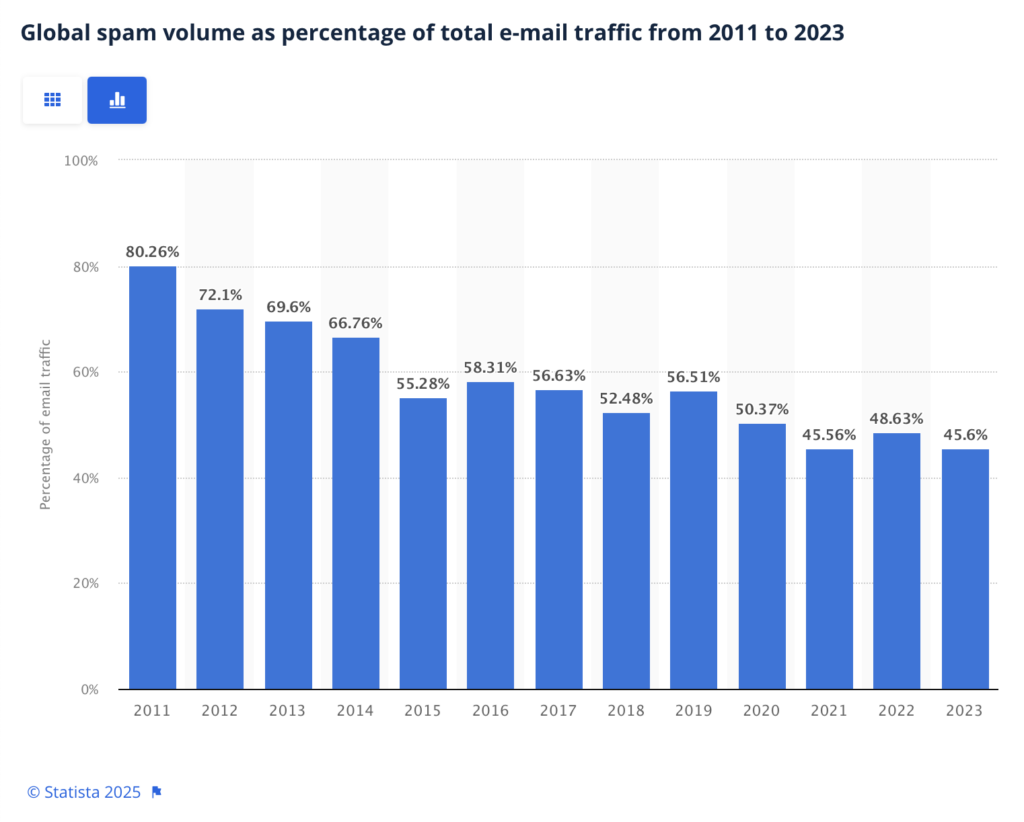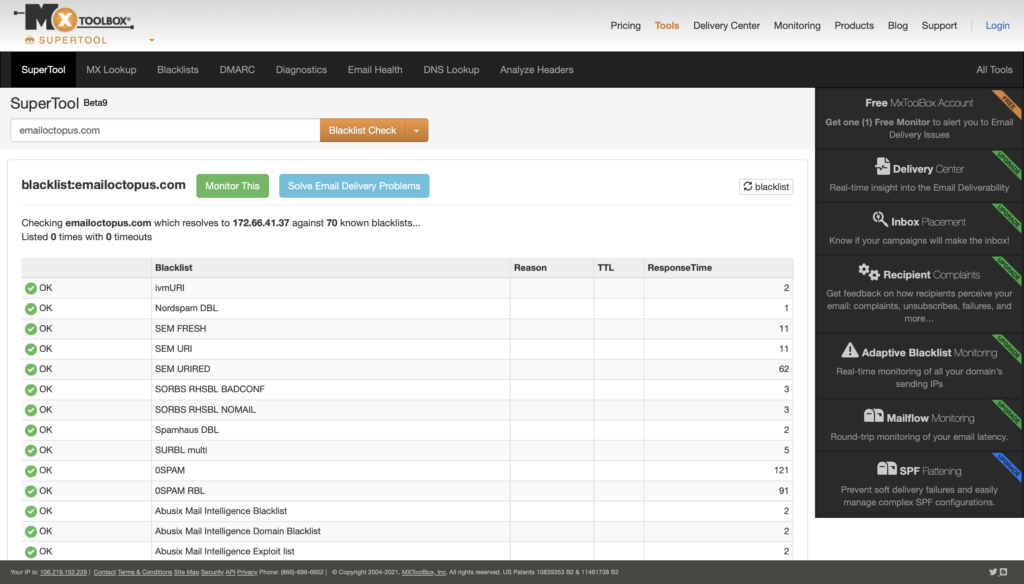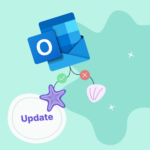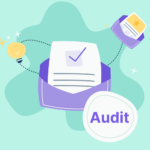According to Statista, approximately 45% of all emails in 2023 were considered spam, and this number was as high as 80% in 2011.

This number is the reason email blocklists exist. Not only do blocklists help reduce spam emails, but they also serve as a powerful tool in protecting users from phishing attacks and other malicious activities. Although email blocklists are designed to stop spam, they can occasionally block honest emails if certain criteria are not met or due to certain mistakes that are done unknowingly.
What is an email blocklist
An email blocklist is a list/database of IP addresses and domains that send spam. Internet service providers (ISPs) and email service providers (ESPs) use these lists to block unwanted emails before they reach your inbox. If you’re blocklisted, your emails might get marked as spam or not delivered.
Different organisations maintain blocklists, including third-party services that provide blocklist data to ISPs and ESPs. Well-known blocklist services include Spamhaus, Barracuda, and SORBS.
How an email/domain gets blocklisted
Email or domain blocklisting happens when an email address or domain is marked as a spam or malicious sender. This can cause their emails to be blocked or filtered as spam. Reasons for blocklisting include:
- Spam complaints: If many people mark emails from a sender as spam, that sender could be blocklisted.
- High-volume sending: Sending too many emails with no sending history, especially without permission or from bought lists, can lead to blocklisting.
- Content issues: Emails with suspicious content, like too many links or misleading subjects, might be flagged as spam.
- Improper email practices: Failing to follow email rules, such as not offering unsubscribe options or violating guidelines (like CAN-SPAM or GDPR), can result in blocklisting.
- IP address reputation: If the sending IP has a bad reputation, related domains may be blocklisted.
- Technical misconfiguration: Incorrect settings, like poor email authentication setup (SPF, DKIM, DMARC), can cause blocklisting.
- Compromised accounts: Hacked accounts sending spam can lead to blocklisting of the domain or email.
Blocklisting harms email delivery and business communication. To avoid it, monitor email practices, keep clean mailing lists, and follow best practices. Use email authentication and regularly check for security breaches.
How to check if email/domain is blocklisted
It’s always a good idea to check your email regularly against blocklists. Tools like GlockApps help automate this process, but they are paid and may not be suitable for most users.
Free tools like MXToolBox and DNSChecker do the same thing for free.

How to get off an email blocklist
Avoiding blocklists is important, but if you find your domain on one, there’s no need to panic. There are steps you can take to remove it.
Find the issue
The first step to getting off a blocklist is identifying the underlying issues. To do this, search for “Reason for domain in {blocklist_name}” or visit the blocklist’s website to understand their criteria.
Note: Replace {blocklist_name} with the name of the blocklist found in the tools (MXToolBox, DNSChecker, etc.) listed above.
Solve the issue
Once you have identified the underlying issue, it is important to resolve it. If possible, do it on your own; otherwise, reach out to the customer support team of your email marketing tool.
Request removal
The final step is to contact the blocklist and request removal.
Do this only after you’ve fixed all issues and have proof. You’ll have to fill out a form explaining what you fixed and agree to follow best practices. Keep in mind, removal might not be immediate, and some blocklists could require extra steps.
Note: There are also freelancers and service providers who can handle all three steps on your behalf for a small fee.
How to stay off an email blocklist
To avoid the complications of being blocklisted, it’s recommended to follow best practices for email sending and list management. Here are some tips to help you maintain a clean email reputation:
- Authenticate emails: Use email authentication protocols such as SPF, DKIM, and DMARC to prove that your emails are coming from a legitimate source. This will help establish trust with ISPs and reduce the likelihood of being blocklisted.
- Have a clean list: Regularly update your email list to remove invalid or inactive addresses. This will help prevent high bounce rates, which can be a red flag for blocklist monitors.
- Get consent: Always send emails to users who have explicitly opted in to receive communications from you. Unsolicited emailing is a quick way to end up on a blocklist.
- Monitor your sending practices: Keep an eye on email engagement metrics like open rates, click-through rates, and spam complaints. A sudden drop in engagement or spike in spam complaints can serve as a warning that corrective action is needed.
- Use reliable email sending platforms: Only a few email service providers have the capability of maintaining the reputation for deliverability and compliance with anti-spam regulations. Remember to only use tools which have this capability.
- Learn about privacy regulations: Ensure compliance with laws and regulations such as the CAN-SPAM Act in the U.S. and the GDPR in Europe. Understanding these rules can help you avoid practices that may lead to blocklisting.
- Monitor blocklist status: Regularly check if your IP or domain is listed on any major blocklists. There are tools and services available that can help with monitoring and alert you if an issue arises.
Conclusion
Staying off email blocklists is key to keeping your communication smooth and your sender reputation safe.
By following good practices and keeping an eye on your email activities, you can improve delivery rates and make sure your emails reach those they need to. A little effort goes a long way in keeping your digital communication channels open and effective.
If you are in search of a reliable email marketing tool that ensures high deliverability and compliance with privacy laws, then give EmailOctopus a try.


No Comments
Leave a comment Cancel